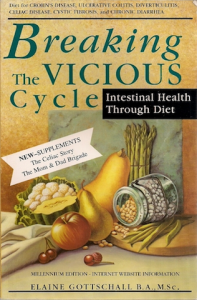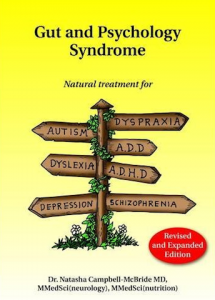With the Paleo Diet, you’ll be restoring the diet you are genetically programmed to eat. You’ll be eating the diet that every single person on the planet ate only 500 generations ago. It is the diet the modern world has completely forgotten. The Paleo Diet is simplicity itself. Here are the ground rules:
- All the lean meats, fish and seafood you can eat
- All the fruits and non-starchy vegetables you can eat
- No cereals
- No legumes
- No dairy products
- No processed foods
The Paleo Diet is not a fat-free diet, it’s a “bad fat” free diet. It has few of the artery-clogging saturated fats found on the low carbohydrate, high fat fad diets, but there is plenty of low fat protein and good fats – such as those found in salmon and other cold water fish, as well as in nuts and olive oil.
The Paleo Diet by Loren Cordain
Recently, I have had a number of people ask my opinion about the Paleo Diet. If you put the three programs on a continuum from least restrictive to most restrictive, the Specific Carbohydrate Diet (SCD) would be first, followed by Gut And Psychology Syndrome (GAPS), then the Paleo Diet (PD). The only area that the PD is less restrictive then the SCD and GAPS is the PD allows starches. All these diets are very healing and can cure the incurable. All these dietary programs want you to get off industrial processed foods which may be the major reason why these dietary programs work so well. These dietary programs restrict many of the same foods but the diets have some major philosophical differences. The saying, “the devil is in the details,” is true for these diets.
Here is a tongue-in-cheek book review by Sally Fallon written in 2002 about The Paleo Diet by Loren Cordain. I found Sally Fallon’s humorous description of the PD very enlightening. In the past, I used to eat a low fat diet and was very worried about all fats, especially saturated fat. I used to skin my chicken, chop off all signs of fat from my steak, and ate only egg whites. The Paleo Diet by Loren Cordain would have agreed with my saturated fat phobia. When I read Sally Fallon’s description of “Peter Paleolith”, I laughed and laughed. After that description I knew the truth was our ancestors would have done anything for fat including cracking bones and skulls for marrow and brains! Sometimes, humor is the only way to break through closely held beliefs.
Loren Condain also does some interesting mental gymnastics in The Paleo Diet. He states, “lean meat is brain food” and follows up this statement with: “At first, humans were not terribly good hunters. They started out as scavengers who trailed behind predators such as lions and ate the leftovers remaining on abandoned carcasses. The pickings were slim: ravenous lions don’t leave much behind, except for bones. But with their handy tools (stone anvils and hammers), our early ancestors could crack the skulls and bones and still find something to eat – brains and fatty marrow. Marrow fat was the main concentrated energy source that enabled the early human gut to shrink, while the scavenged brains contained a specific type of omega 3 fat called “docosahexaenoic acid (DHA), which allowed the [human] brain to expand.”
So which is it? Does lean meat build brains or does fat build brains? Loren Condain likely believed the low fat dogma of his day like many other intelligent people. But he becomes disingenuous when he states the PD is a return to our ancestral diet while manipulating the diet to fit modern tastes and quoting current dietary dogma. I would image it was an easier sell to base a diet book on lean meat and vegetables rather than bone marrow and brains.
When I started eatkamloops.org, I had to decide which dietary program best illustrated my dietary approach. The SCD/GAPS program was the best fit but I always used some elements of the PD. I used many PD recipes and found PD resources to be very helpful. I just ignored the fat and salt phobia. I did not eat starches that are restricted on the SCD/GAPS program. At the time, a large segment of the Paleo movement were thinking some strange thoughts, like believing our ancestors ate skinned chicken breasts, didn’t use salt, and ignored the use of raw dairy in numerous traditional cultures.
The PD condemns all grains, legumes and beans. Grains, legumes, and beans are “poisons” for me, but I know many people do very well on these foods if properly prepared. Even though I do well on a low carbohydrate diet, low carbohydrate diets do not work well for all people. Some people need more carbohydrates to function optimally. Micro-nutrient needs are very individual and can change for the individual if activity levels change or as we age. The PD allows starches but both the SCD/GAPS restrict these foods because the people that are helped by the SCD/GAPS cannot digest complex starches.? Finally, the PD had many views that counter the opinions of the Weston A Price Foundation, an organization I have great respect for. The WAPF got me on a high fat diet, a change I will forever be grateful for.
All three dietary programs completely restrict all grains and their products. The SCD/GAPS does allow a limited amount of beans and legumes. Since I do not eat either of these food groups, I am more of a PD follower in this one area. In the past, I avoided all dairy which is one of the restrictions of the PD and the extreme version of GAPS. Since I found a source of raw milk, I have been able to re-introduce raw cheese, fermented dairy products, and even liquid raw milk. Liquid milk is restricted on all three dietary programs.
I was still scared about eating more fat. It was this book review and other WAPF articles about traditional diets that made me brave enough to take the chance and go high fat with my diet. My experience going high fat was very positive. I “cured” my health problems which included: asthma, allergies, chronic sinus infections, yeast infections, osteoarthritis and epilepsy. For more details please read: Specific Carbohydrate Diet: A Personal Story.
Over the last number of years more research has come to light about the importance of fat in the diet. If you read the link above you will know I identify with the SCD/GAPS but really I am on a combination of all three dietary approaches. In the past, I could not identify with the PD movement because of the Paleo dogma around low fat/high protein, salt, and dairy. Well now I can identify with the PD movement, because the PD movement is realizing that raw dairy, especially fermented dairy, high fat cream, and butter, can be good for many people. Of course, even the best quality dairy is not for everyone.

This is a modified paleo burger. Loren Cordain would be horrified to see raw cheese on this burger. Many paleo diet followers are now including raw dairy, if they consume dairy at all. In the Paleo Community the term "Swiss Paleo" is used to describe people consuming raw dairy.
The dogma about low fat diets being better is finally being seen as erroneous. I just found a great website about the “modified” PD called Paleo Diet Lifestyle. I have read most of the website and I agree with everything I have read. I also really like Mark’s Daily Apple for great PD recipes and “Paleo lifestyle” information. He has free ebooks for PD recipes and body weight exercises that can be done anywhere without any equipment. Even though I really like Mark’s Daily Apple, I do not endorse his use of supplements. These are not real foods but industrial nutraceuticals. Guidelines from the Weston A Price Foundation recommend eating real foods from a quality source first, and then the use of superfoods, if necessary. Here is my use of superfoods.
Finally, what I like about SCD/GAPS philosophy is that after the person heals their gut the person may be able to go back to eating ?some? of the restricted foods. For those people that can tolerate these foods, the WAPF gives good advice on how to properly prepare these sometime troublesome foods. Of course, many of us do not go back to eating these foods because if we do, we get sick again.
The PD would state that these foods are bad for everyone and if we value our health and longevity we should never eat these foods again. The WAPF states many traditional cultures used ?properly? prepared dairy, grains, legumes and beans. For many of us, we are too damaged to consume these foods. The question each of us must answer for ourselves is, which of these foods made us sick? My great-grandfather used to say: ?If the food doesn?t agree with you, leave it alone.? Good advice for all of us.
One last word about the PD. What I really like about the PD philosophy is trying to image the food and lifestyle of our ancestors. No one can doubt the vitality of these primate people nor that our modern food and lifestyle is not working for many of us. The PD has come a long way from its original form and the lifestyle of our ancestors might hold the key to functional longevity and a sane habitation of our planet.
The “modified” PD lifestyle might be the program for you if you would like to “plateau your aging at a younger age”. Did I say plateau your aging at a younger age? Did I say stop aging? Here is a link to a video about Michael Rose, an Evolutionary Biologist whose research focus has been on natural selection and aging. Here is Jimmy Moore’s Episode 478: Evolutionary Biologist Michael Rose On The Paleo Connection To Achieving Biological Immortality. If you find this video catches your interest, please see the 55 Theses, which explores and expands the ideas in the video.
Sorry, but the 55 Theses are a total grind, but if you live a longer functional life, you will have the time! The author of the 55 Theses is Rob Paterson who maintains a website called Missing Human Manual. Give yourself a few days to read the material. It will be a wild ride. I guarantee it!
Updated December 5, 2013: Sally Fallon Morell has written a essay on the Difference Between the Weston A Price Foundation Diet and the Paleo Diet.



